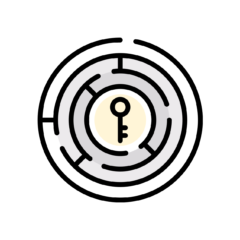There was an article on LinkedIn about interview attire. The author suggested that candidates should always dress formally for an interview including a suit and tie for men and pantyhose for women. My comment started with”Um, no.’ Here’s the thing about your interview attire: you want the interviewers to remember YOU, not your outfit. I’d also like to point out that a job fair is *also* a form of interview. You are going to be engaging with people that are gatekeepers for whether or not your resume is seen by a hiring manager. If you think your sloppy appearance isn’t noticed or commented on, think again.
I work in the tech sector in the very laid back Northwest. If a software engineering candidate comes wearing a suit and tie, that is a huge red flag from a cultural perspective. The message is ‘too formal’, ‘too rigid’, doesn’t ‘get it’. To be honest, showing up in nice jeans and a button down shirt would be a better decision in our industry and market.
I generally recommend ‘business casual’ for most candidates in most industries. Exceptions to the ‘no suit’ rule should be dictated by geography and industry. Financial services, law, government, religious organizations, and consulting industries should almost always be full suit. Non-profit norms depend on the sector. Color rules should still be relevant. The more conservative the industry, the more likely it is that you will wear a suit. If you are interviewing for a corporate leadership position (executive), a suit is always acceptable.
Also, the further west you move, the more casual things will probably become.
BR />I think it’s easier for men to figure out the concept than most women. When it comes to long hair and facial hair, make sure it is neatly groomed and clean. Long hair should be pulled back.
Here are some dos/don’ts
Do:
-Slacks/trousers (Dockers, Chinos, suit pants)
-Collared shirt (‘button down’); a polo shirt might be appropriate in certain climates
-Vest, sports coat, or cardigan if the weather is cold
-Tie or slip on shoes (loafers), dress boots
-Minimal jewelry (ring, watch, necklace, stud earring/s)
Business casual may include a tie or not depending on the job and industry. If you are going to be in a client/customer facing role, go with a tie. Avoid ‘quirky’; that fish tie you like should probably stay at home and the striped one would probably be better.
Don’t:
-Tennis shoes/sneakers or flip flops
-Skinny jeans. Ever.
-Logo/art t-shirts
-Shorts
-Tank shirts
Stick to relatively subdued colors for the most part unless you are in a creative industry (for example you are in PR). Think blues, grays, black, brown, tan. Go for the less vibrant hues (navy or light blue instead of a bright royal). If you choose to wear a pattern, go for something small and more subdued.
Women have a much wider variety of fashion choices than men. It’s easier to give guidelines of what not to wear in this instance. I was at campus recruiting events earlier this year and the number of women that were falling out of their clothing was appalling.
– If you have to cross your legs when you sit down so people cannot see up your skirt, don’t wear it. It is too short.
-Heels that are too high. This isn’t a date, it’s an interview. 3 ‘ inches should be your maximum. If you are in a warm climate, open toe shoes are fine but *never* flip flops. Ever. Make sure your feet and toenails are groomed. No cracked heels and scaly skin, please.
-Tennis/athletic shoes, I don’t care how cute they are.
-Crop pants and shorts. Both are too casual for interviews. Stick to trousers.
BR />-Extremely clingy fabrics. A close-fitting sheath is one thing, the dress you wear for date night leaving nothing to the imagination -meant to entice your S.O. to want to rip it off – is totally inappropriate for interviews.
-Fabrics that are too shiny and sparkly can be distracting to interviewers. Leave the sequins, PVC and pleather at home.
B >Wen it comes to jewelry, less is more. Fewer pieces, less bling, smaller scale/size. Save the 6′ dangle earrings for happy hour.
B />-If you want to have a ‘statement’ piece or accessory, stick to a necklace, scarf, purse or shoes (color or pattern). />-When it comes to color and pattern, women have a bit more leeway. However, the same rules for vibrancy/hue stand. Don’t distract your interviewers with bold prints and colors. This is a time for your personality to shine.
-Makeup: nude palette is optimal, but if nothing else please remember that you are in an office building, not a club. Use a lighter hand with your eyes, and light-medium colors on your lips.
If you are interviewing in an industry where suits are standard, unless it is over 90 degrees outside wear pantyhose and closed toe shoes.
